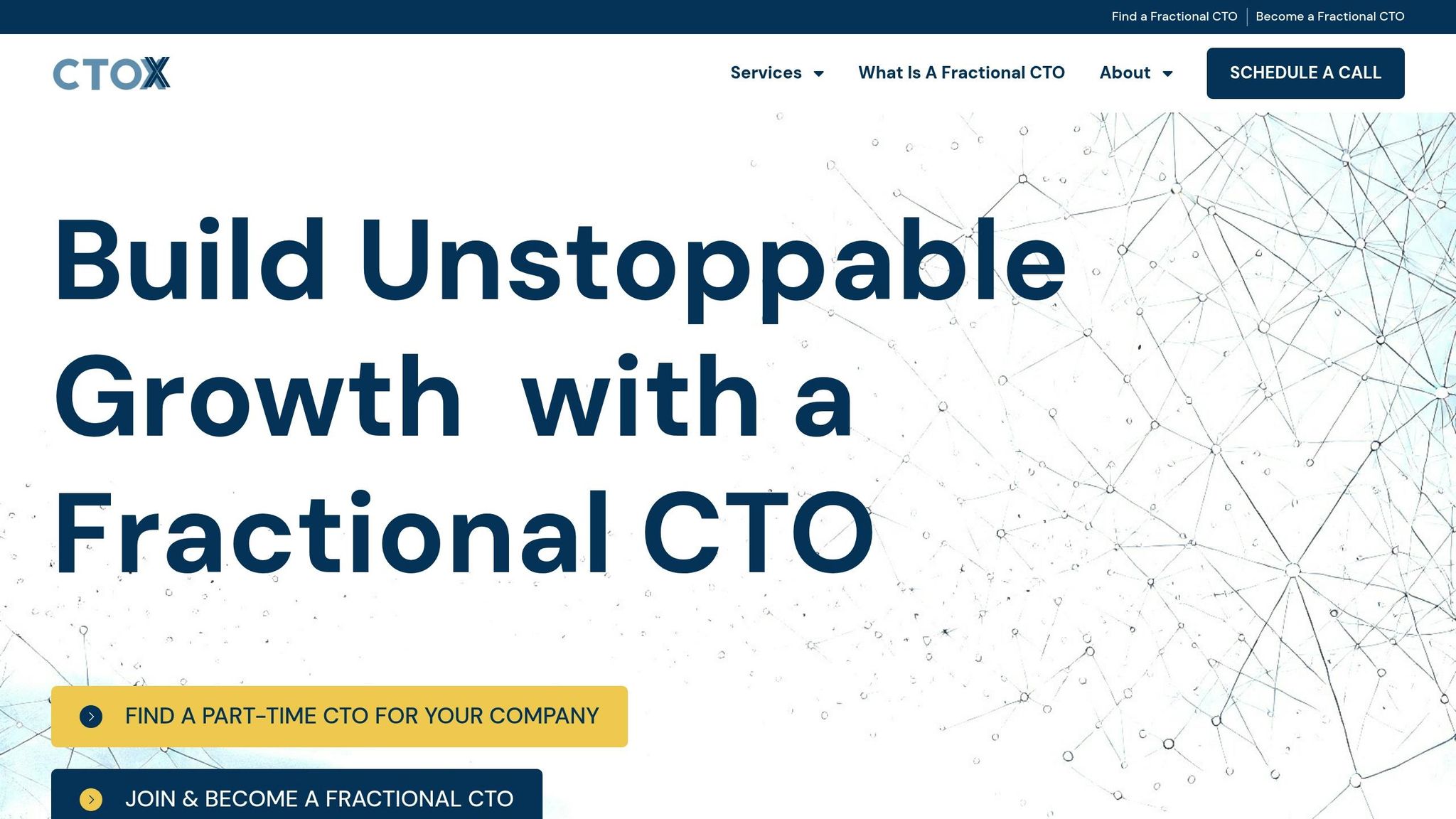Risk assessment is critical for successful technology planning. It helps identify, analyze, and address potential threats to ensure tech projects align with business goals and avoid costly mistakes. Here’s a quick summary of the key points:
-
What is Risk Assessment?
A process to identify vulnerabilities, analyze their impact, mitigate risks, and monitor progress. -
Why It Matters:
- Prevents expensive errors
- Protects investments
- Ensures efficient resource use
-
Types of Risks:
- Technical: System compatibility, security gaps, scalability issues
- Financial: Budget overruns, poor resource allocation
- Operational: Skill gaps, vendor reliance
- Compliance: Regulatory and privacy requirements
-
Steps to Manage Risks:
- Identify risks
- Analyze their impact
- Mitigate with strategies
- Monitor KPIs regularly
-
Response Options:
- Avoid, transfer, reduce, or accept risks based on their severity.
Risk Assessment – Step-by-Step Guide
Finding Technology Roadmap Risks
Spotting risks in a technology roadmap requires a structured process to identify potential threats early. This sets the stage for a deeper evaluation and precise documentation in later steps.
Key Risk Categories
Technology roadmap risks generally fall into four main groups:
Technical Risks
- Issues with system compatibility
- Security gaps
- Accumulating technical debt
- Limits in infrastructure scalability
Financial Risks
- Exceeding the budget
- Poor resource allocation
- Higher-than-expected maintenance costs
- Uncertainty around returns on technology investments
Operational Risks
- Limited team capacity
- Gaps in expertise
- Inefficient processes
- Over-reliance on vendors
Compliance Risks
- Meeting regulatory requirements
- Adhering to data privacy laws
- Aligning with industry standards
- Securing necessary certifications
Ways to Identify Risks
A mix of methods works best when looking for risks:
Technology Infrastructure Audit
Dive into your current systems to find weak spots or inefficiencies. Focus on:
- How well the existing tech stack performs
- Integration points between systems
- Security measures in place
- Dependence on outdated systems
Team Assessment
Evaluate the team’s health and capabilities. Look at:
- Skill gaps that need addressing
- How resources are distributed
- Processes for sharing knowledge
- Training needs
Documenting Risks
When documenting risks, aim for clarity, depth, and accessibility:
Organized
- Use standardized templates for assessments
- Categorize risks consistently
- Assign ownership for each risk
- Regularly update the documentation
Detailed
Include specifics for every risk:
- A clear description and category
- How it could impact business goals
- The chance of it happening
- Steps to mitigate the risk
- Metrics for monitoring progress
Easy to Access
- Make documentation simple to retrieve for stakeholders
- Keep it updated with new insights
- Integrate it into project management tools
- Use it actively in decision-making processes
Risk Evaluation and Ranking
Once risks are identified, the next step is to assess their impact and likelihood. This process helps prioritize actions and allocate resources effectively, bridging the gap between identifying risks and creating actionable plans.
Measuring Risk Impact
To rank risks effectively, their impact is assessed using both qualitative and quantitative measures. These evaluations cover financial, operational, and strategic areas, providing a clear picture of potential consequences.
Financial Impact
- Direct costs
- Lost revenue
- Mitigation expenses
- Long-term economic effects
Operational Impact
- System downtime
- Reduced team productivity
- Customer service disruptions
- Delayed project timelines
Strategic Impact
- Market position
- Competitive edge
- Ability to innovate
- Relationships with key partners
Risk Priority Charts
Risk priority matrices are a useful tool for visualizing and ranking risks based on their likelihood and severity. For more complex interactions between risks, deeper analysis is often necessary.
| Impact / Likelihood | Very Low (1) | Low (2) | Medium (3) | High (4) | Very High (5) |
|---|---|---|---|---|---|
| Critical (5) | Medium | High | High | Extreme | Extreme |
| Major (4) | Medium | Medium | High | High | Extreme |
| Moderate (3) | Low | Medium | Medium | High | High |
| Minor (2) | Low | Low | Medium | Medium | High |
| Negligible (1) | Low | Low | Low | Medium | Medium |
Complex Risk Analysis
In systems with many stakeholders or interconnected components, standard evaluations may not be enough. Advanced methods are necessary to account for these complexities.
Multivariable Assessment
- Relationships between risks
- Scenarios where failures cascade
- Combined effects of multiple risks
- How risks change over time
Uncertainty Modeling
- Analyzing probability distributions
- Scenario-based approaches
- Setting risk tolerance levels
- Determining confidence levels
Regular audits of systems and processes can ensure that technology infrastructure aligns with growth goals.
Dynamic Risk Tracking
- Real-time monitoring
- Identifying trends
- Early warning signs
- Flexible response mechanisms
For complex technology projects, consulting a Fractional CTO can bring expert insights into risk analysis and mitigation. Their experience across industries ensures effective management of tech infrastructure and early detection of emerging risks, preventing disruptions to operations.
sbb-itb-4abdf47
Risk Response Planning
Once risks are evaluated, it’s time to take action. Organizations need clear strategies to handle potential threats to their technology initiatives. This step requires balancing proactive measures with the ability to react effectively when needed.
Risk Response Options
When it comes to addressing technology risks, there are four primary approaches, each with a specific purpose:
| Response Type | Description | When to Use |
|---|---|---|
| Avoid | Change the approach to eliminate the risk entirely | When the risk is too high to tolerate |
| Transfer | Shift responsibility to a third party | When specialized expertise is required |
| Reduce | Minimize the likelihood or impact of the risk | When partial mitigation is feasible |
| Accept | Acknowledge the risk and monitor it | When mitigation costs outweigh the benefits |
A Fractional CTO can help fine-tune these strategies to fit your business needs. By incorporating these responses, you can ensure your tech roadmap aligns closely with your strategic goals.
Adding Risk Plans to Roadmaps
Integrating risk responses into your technology roadmap ensures they align with your business objectives. This involves:
- Mapping actions to specific project milestones
- Allocating resources for mitigation efforts
- Defining ownership and accountability for each risk
- Setting measurable metrics to track success
A thorough technology audit can confirm that your infrastructure supports these plans while remaining scalable for future growth.
Backup Plan Development
For risks that could severely disrupt operations, having a backup plan is essential. These plans should address potential failure scenarios and provide clear recovery strategies.
Key Elements of Backup Plans:
- Alternative technology solutions and resource reallocation
- Emergency procedures and communication protocols
- Regular system audits to ensure the plan remains effective
"A fractional Chief Technology Officer (CTO), or Part-Time CTO, serves as your go-to executive tech leader, at a fraction of the cost and time – often saving over $200,000 per year. They direct your technology strategy and manage your tech department without the full-time CTO hassles. This model offers the flexibility and expert guidance needed to align technology with your business goals effectively." – CTOx®
Investments in backup plans are cost-effective. Regular audits of your systems ensure these plans stay relevant and compatible with current technology, seamlessly integrating into your broader technology roadmap.
Risk Management Tracking
Effective risk management isn’t just about planning; it’s about keeping a close eye on how mitigation strategies are working. By using tracking systems, organizations can stay ahead of potential tech challenges and ensure steady progress.
Risk Management Process
Regular reviews are the backbone of managing technology risks effectively. These reviews should happen at set intervals, with clear accountability and thorough documentation to keep everything on track.
Core Elements of the Process:
- Weekly updates from project teams on risk status
- Monthly in-depth risk assessments
- Quarterly reviews of risk management efforts
- Annual audits focused on technology risks
"This tech strategy is continually refined through routine KPI scorecards, providing transparent, valuable insights that guide improvements and decision-making." – CTOx®
The success of these processes relies on consistent follow-through and well-defined roles. Meetings led by tech leaders ensure that risk strategies align with the broader goals of the business.
Risk Tracking Systems
Tracking risks effectively means using the right tools and metrics. A well-designed system should measure both the numbers and the context behind them.
| Metric Type | Focus Area | Frequency |
|---|---|---|
| Leading Indicators | Early warning signs of risks | Weekly |
| Performance Metrics | Current risk levels | Monthly |
| Impact Assessment | Effectiveness of responses | Quarterly |
Key Features of a Strong Tracking System:
- Dashboards with real-time updates
- Automated alerts for risks exceeding thresholds
- Tools to monitor progress toward mitigation goals
- Historical data analysis to identify trends
Improving Risk Assessment
To get better at managing risks, organizations need to learn from past experiences and tweak their processes over time. Using project outcomes as a learning tool can help refine risk management practices.
Ways to Improve:
- Use KPI scorecards regularly to evaluate tech strategies
- Conduct post-mortem reviews after risk events
- Update evaluation methods and criteria with new insights
The real value comes from clear reporting and actionable metrics. By turning tracking data into useful insights, tech leaders can make smarter decisions and improve their risk management strategies over time.
Conclusion
Risk Assessment Guidelines
A structured approach to risk assessment is critical for building strong and adaptable tech strategies. One essential practice is conducting 90-day audits to identify both risks and opportunities. This methodical process ensures your technology strategy stays aligned with your business goals.
Key principles to focus on include:
- Regular reviews of your technology infrastructure
- Using KPI scorecards to make informed, data-based decisions
- Considering the role of new technologies
- Thorough evaluations of security and compliance measures
These steps lay the groundwork for taking swift, effective action.
Action Steps
Establishing solid risk assessment practices involves creating clear workflows that can grow alongside your organization.
| Timeline | Action Item | Expected Outcome |
|---|---|---|
| Month 1 | Conduct Technology Infrastructure Audit | Identify and address underperforming tech vendors |
| Month 2 | Implement KPI Scorecards | Set baseline metrics for tracking risks |
| Month 3 | Develop Risk Response Plans | Formulate actionable strategies to mitigate risks |
| Quarterly | Perform Strategic Technology Reviews | Ensure alignment between tech initiatives and business goals |
Need help executing these steps? A Fractional CTO can help. Click here to find a part-time CTO for your company.
A Fractional CTO Can Help With Risk Management Services
CTOx provides tailored risk management solutions through fractional CTO services, with pricing between $3,000 and $15,000 per month. These services include expert guidance on creating effective data policies, enhancing cybersecurity measures, optimizing your technology infrastructure, and exploring opportunities with new technologies.
With tools like routine KPI scorecards and strategic reviews, CTOx ensures your organization stays ahead of potential risks while maximizing the value of your tech investments. This proactive approach helps safeguard your operations and keeps your technology roadmap on track.








